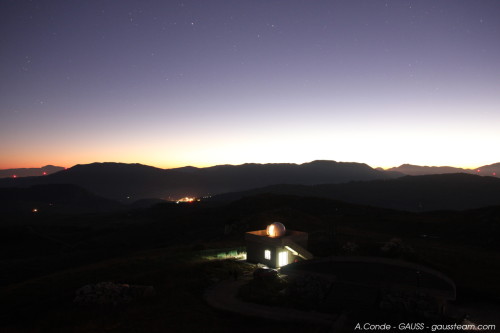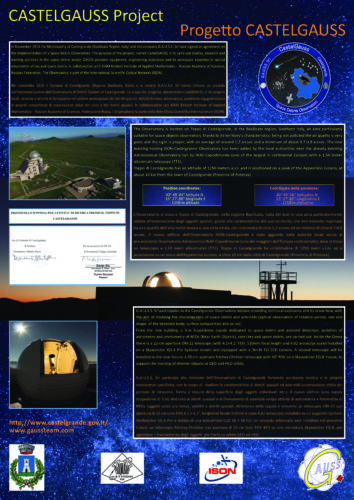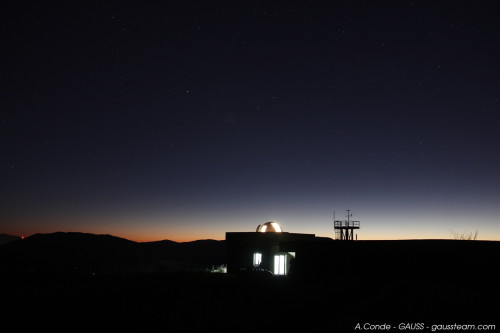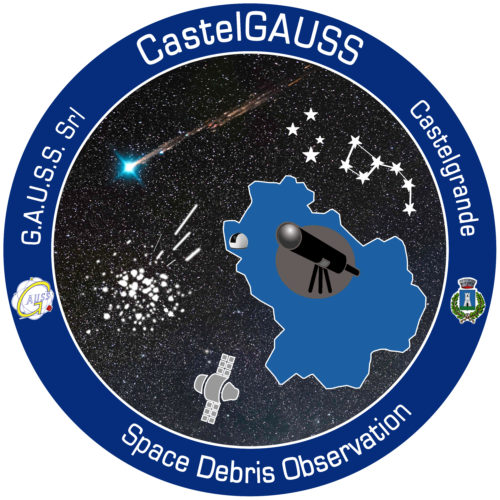
Logo of CastelGAUSS Project
GAUSS participates in the Castelgrande Observatory Mission, through the CastelGAUSS Project, providing valuable technical assistance and its know-how in space debris research.
The area of Toppo di Castelgrande, in the Italian region of Basilicata, is particularly suitable for space objects observation. This zone was already selected to host the astronomical observatory managed by INAF-Capodimonte, with a 1.54 meter alt-azimuth telescope, named TT1.
Near the TT1 observatory, a building was added in 2014 in concert with local authorities, dedicated to the detection of space debris and asteroids.
CastelGAUSS Observatory, run by GAUSS, exploit an automatized setup which includes two telescopes and IT for optical observations.
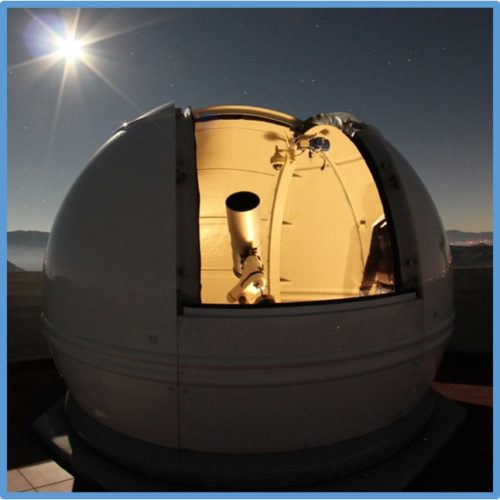
Castelgrande Observatory 2M Dome with its ORI22 telescope
In the CastelGAUSS Project, Space surveillance activity is conducted in collaboration with specialized teams located in other observatories around the world, having a good astro-climate and operating optical telescopes.
Our specialists, experienced in optical telescope use can support spaceflight safety from LEO to GEO and detect the appearance of new celestial objects as well as the possibility of close encounters.
The aim of the CastelGAUSS Observatory is to study the characteristics of space debris and NEOs (including asteroids), the optical observation of rotation periods of tracked objects, detection of the size and shape of the detected body, photo-metric measurements, surface composition and relative studies.
The first dome currently houses a 22-cm aperture ORI-22 telescope (with 4.1×4.1° FOV, 510mm focal length and 4.82 arcsec/px scale), installed on a Skywatcher EQ-6 Pro mount and equipped with a 3k×3k FLI CCD camera.
A second telescope was installed in 2022 in second dome, a 35-cm aperture Ritchey-Chrétien telescope with 40′ FOV, to support the tracking of dimmer objects at GEO and HEO orbits.
The astronomical Observatory has been assigned an MPC code (L28) from the Minor Planet Center.
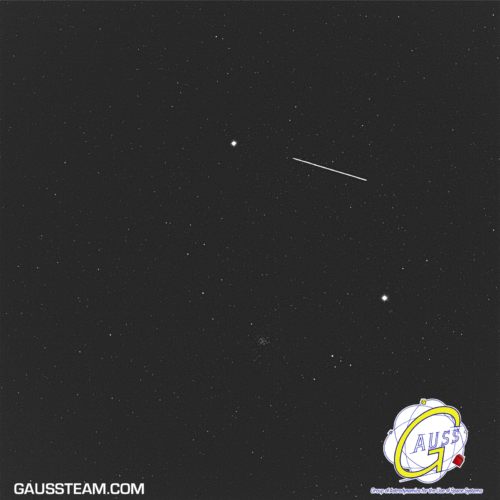 Thanks to the use of CastelGAUSS observatory GAUSS personnel was able to capture a picture (on the right) of the Chinese Space Station Tiangong-1 while passing over Italy during its descent to re-enter the Earth atmosphere, on March 31, 2018.
Thanks to the use of CastelGAUSS observatory GAUSS personnel was able to capture a picture (on the right) of the Chinese Space Station Tiangong-1 while passing over Italy during its descent to re-enter the Earth atmosphere, on March 31, 2018.
The powerful image has been taken during the activity of observation and monitoring using an exposure of 0.5 seconds, and the image IFOV was located at 18h 36m 48.602s RA, -23˚ 09′ 15.96″ DEC.
The picture has been reported in many national and international news, during the event as one of the clearest picture of the Chinese spacecraft decaying back to Earth.
The results of the space debris observation are being further studied.
Scientific results obtained with CastelGAUSS Observatory have been presented in many international conferences on Space Debris, and in 2019 the IAA Italian Regional Symposium on Space Debris Observations from Basilicata has been held in Toppo di CastelGrande, and researchers from all over the world have shared their research on Space Debris, optical / radar observations of NEOs, and current research topics on space debris removal.
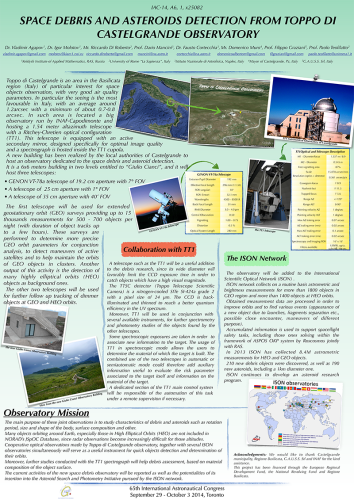
Work developed by Riccardo Di Roberto, presented at the 65th IAC Conference held in 2014 in Toronto, Canada
Here below you may find some pictures of the Observatory, together with some results of photometric measurements realized.
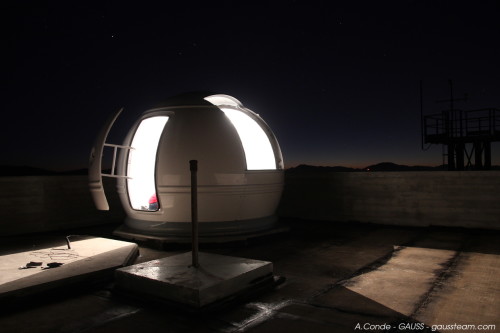
Castelgrande Observatory Dome (of CastelGAUSS Project) during the first light and calibration operation
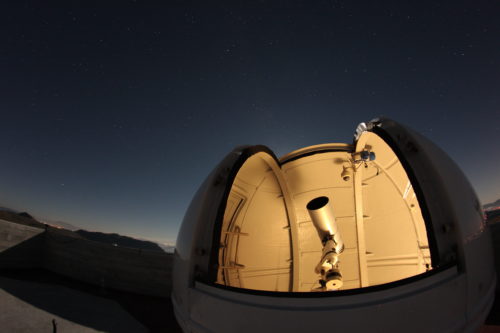
CastelGAUSS Dome (CastelGAUSS Project) with Automated Telescope
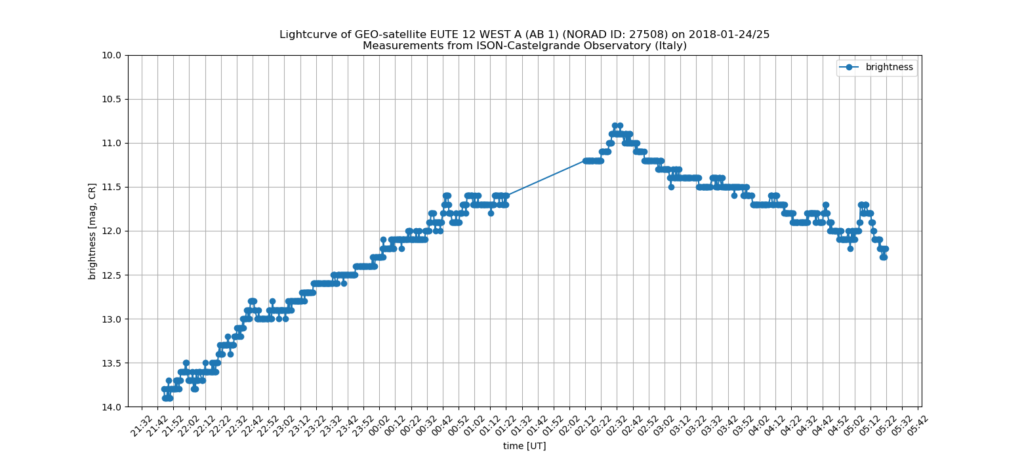
Light curve (photometric measurement) of the satellite EUTE 12 WEST A (NORAD ID 27508) detected by the CastelGrande Observatory during the night of 2018/1/24

